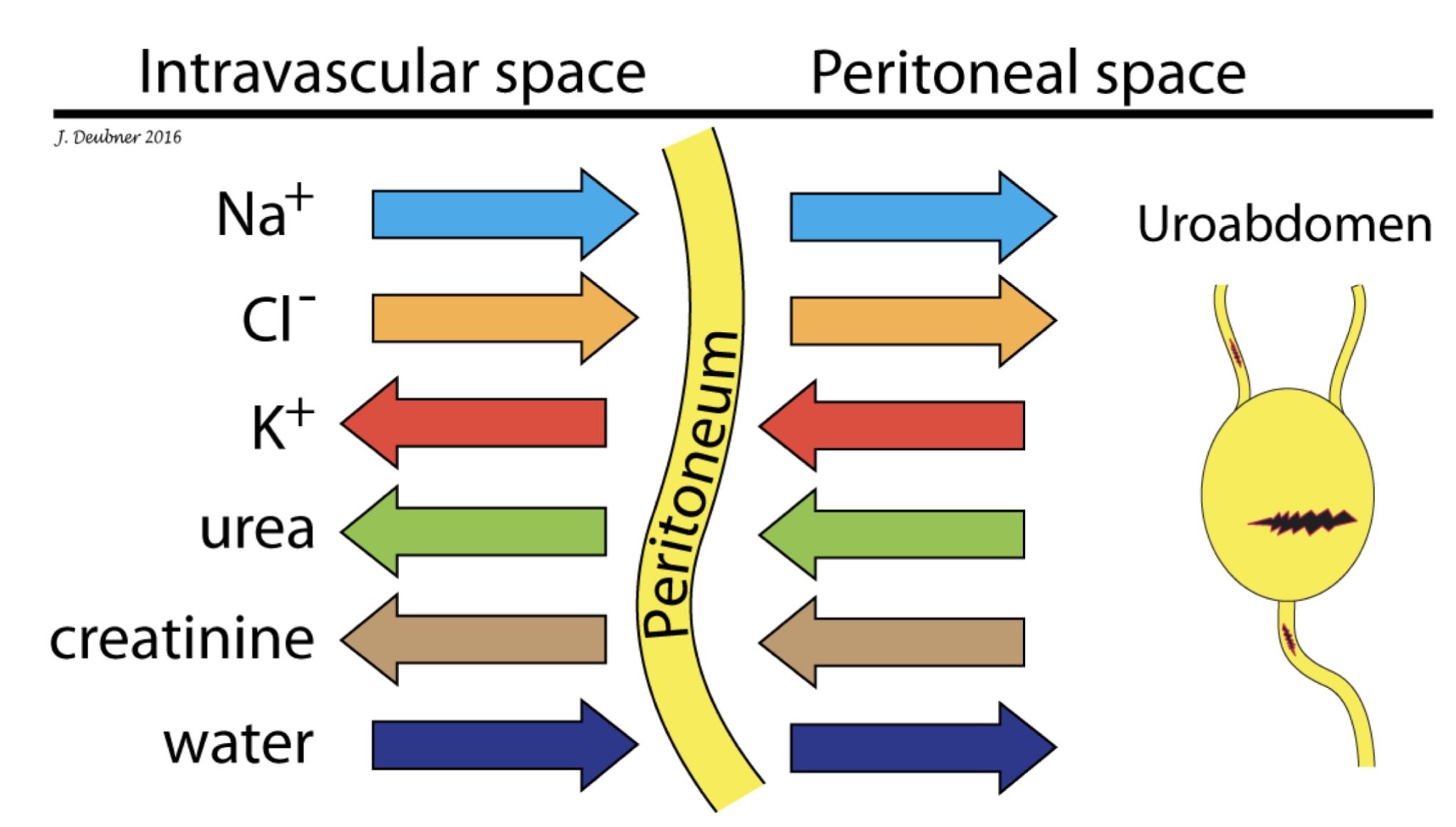Uroabdomen
Uroabdomen can occur with trauma, inflammation/infection, or neoplasia that renders the urinary tract no longer intact or viable. Uroabdomen causes several abnormalities on the biochemical panel due to movement of substances and fluid along a concentration gradient (Fig. 7.1). Urine contains high concentrations of urea and creatinine, therefore these substances diffuse from the abdomen to enter the vascular space resulting in azotemia. Urine contains low concentrations of sodium and chloride, therefore these electrolytes move into the abdomen resulting in hyponatremia and hypochloremia. Potassium content is usually higher in urine than serum, and will move from the abdomen into the vascular space. However this finding is more variable. Urine is typically of high osmolarity, therefore water tends to move from the vascular space into the abdomen in an attempt to equilibrate, resulting in hemoconcentration and often severe clinical dehydration.

Concentration of osmotically active particles in solution expressed in osmoles of solute per liter of solution (mmol/L).

